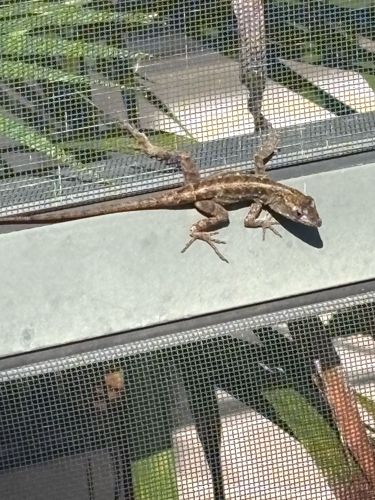Brown Anole
Scientific Name: Anolis sagrei
Order & Family: Squamata, Dactyloidae
Size: Males 13-21 cm (5-8.5 inches) including tail; females 8-15 cm (3-6 inches) including tail.

Natural Habitat
Typically found in subtropical and tropical environments, often in urban and suburban areas, gardens, fences, walls, and trees. They are highly adaptable.
Diet & Feeding
Primarily insectivorous, feeding on crickets, grasshoppers, roaches, spiders, moths, and other small invertebrates. They also consume other small lizards (including their own young), and occasionally plant matter like seeds or berries.
Behavior Patterns
Diurnal, active during the day. Known for their territorial behavior, especially males who display a distinctive dewlap (a retractable throat fan) to attract mates and warn off rivals. They can change color from light gray to dark brown to camouflage with their surroundings or regulate body temperature. They are quick and agile climbers.
Risks & Benefits
Potential risks to ecosystems include being an invasive species in many areas (e.g., Florida, Hawaii) where they can outcompete native anole species for resources and prey on native insects and small vertebrates. They are generally harmless to humans. Benefits include natural pest control by consuming various insects.
Identified on: 9/6/2025